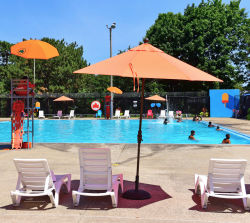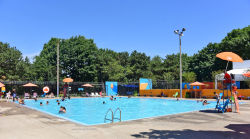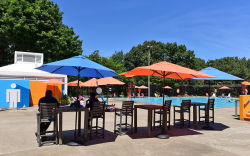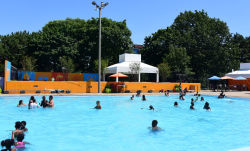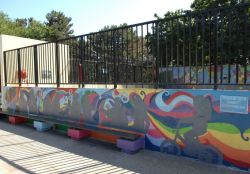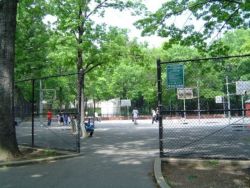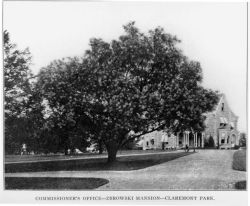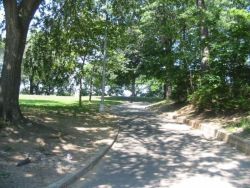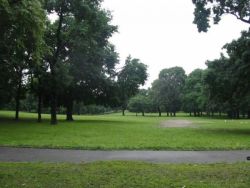Claremont Park
Claremont Park
What was here before?
The area that is now Claremont Park was once part of the Morris family estate, founded in 1679. Aware of encroaching suburban development with the arrival of the New York and Harlem River Railroad, Gouverneur Morris II (1813-1888) auctioned off much of his land in 1848. Newlyweds Elliott and Anna Zborowski de Montsaulain acquired a parcel in the northern portion of the former Morris property. In 1859 they built the Claremont mansion and developed the grounds with terraced lawns that descended to the Mill Brook (now Webster Avenue). The name Claremont has roots in the French language and refers to the hilly terrain and impressive vistas.
How did this become a park?
In 1881 John Mullaly (1835-1913), regarded as “the father of the Bronx Parks system,” helped to found the New York Park Association. Presenting comparative studies of parkland in foreign cities, predictions of rapid population growth in New York, and rising land values, the Association called for more land for parks in the southern Bronx, which was annexed by New York City in 1874. This effort culminated in the 1884 New Parks Act and the city’s 1888-90 purchase of lands for Claremont, Crotona, Van Cortlandt, Bronx, St. Mary’s, and Pelham Bay Parks and the Moshulu, Bronx and Pelham, and Crotona Parkways.
The Claremont property was prized for its park-like landscape of meadows, farmland, woods, and swamps. New park paths and local streets were laid, and facilities for baseball and tennis were created. The infamous Black Swamp—which swallowed up livestock in colonial times—was filled in by the early 20th century. The mansion was converted for use as the local administrative headquarters of the Bronx Parks Department. Eventually, traces of the old estate, such as the apple orchards, were removed.
In 1914 the Parks and Playgrounds Association established new playgrounds in eight Bronx parks, including one at Claremont Park. The average attendance in the first year was 700 children a day. According to the 1914 Annual Report of the Department of Parks, children were “drawn to these playgrounds where they were able to give full vent to their excess of feelings and enjoy to the fullest extent those kinds of exercise which were conducive to their well-being both mentally and physically.”
Substantial changes in the 1930s and 1940s transformed Claremont into a modern park. The Zborowski mansion was razed in 1938 and replaced with a gazebo, as Bronx Parks headquarters moved to a new building (now called Ranaqua) on Bronx River Parkway. Additional improvements were made in 1938, and four new playgrounds opened in the park in 1940.
A new outdoor pool opened in the park in 1971, with further upgrades to the park in 1996 and 1998. More recently, new play equipment and site improvements were made in 2017. Pathways were reconstructed in 2020. The park’s southern basketball courts were repaved in 2024, and a 115-foot section of retaining wall was rebuilt along Clay Avenue between Claremont Parkway and East 170th Street.
Check out your park's Vital Signs
Clean & Safe
Green & Resilient
Empowered & Engaged Users
Share your feedback or learn more about how this park is part of a
Vital Park System

